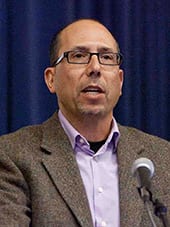By Susan Gluss
Article update: Californians defeated Prop 62 (death penalty repeal) but instead passed Prop 66 (accelerated executions) by a slim margin. State voters also approved Prop 57 (earlier parole), Prop 63 (ammunition restrictions) and Prop 64 (marijuana legalization).
PROPOSITIONS
Prop 57 Parole, Juvenile Court
Allows earlier parole. Offers sentence credits for good behavior. Permits juvenile court judge to decide if juvenile will be tried as adult.Prop 62 Death Penalty Repeal
Repeals death penalty and replaces it with life without possibility of parole. Increases percentage of inmates’ wages applied to victim restitution.Prop 63 Ammunition Sales
Requires background check to buy ammunition. Prohibits possession of large-capacity magazines. Sets new procedures to enforce firearm laws.Prop 64 Marijuana Legalization
Legalizes recreational marijuana. Imposes state taxes on sales and cultivation. Sets industry licensing standards.Prop 66 Accelerated Executions
Limits time frame for death penalty cases. Requires attorneys to accept capital appeals. Speeds up execution process.
Californians face a slew of ballot propositions on Election Day Nov. 8, and several, if passed, could lead to significant reform of the state’s criminal justice system.
Of the 17 ballot measures, 5 focus on contested aspects of the ‘law and order’ canon, which include, in brief: capital punishment, sentencing and parole, ammunition sales and the legalization of marijuana (see sidebar).
The most high-profile measure, Proposition 62, would repeal the death penalty and replace it with life without parole. Nationwide, 19 states and Washington, D.C., have already banned capital punishment, and California—along with Nebraska and Oklahoma—may do the same this fall.
A similar ballot measure failed here in 2012. But polls show a softening of support for the death penalty in the state and across the country. A multitude of factors are at play, from the emergence of DNA evidence exonerating the innocent to botched lethal injection executions.

“There is decreased support even among people who philosophically support the death penalty,” said Elisabeth Semel, director of the law school’s Death Penalty Clinic. She cites a concerted effort to end a broken system. “The benefits are far fewer than the ways in which it harms the nation, whether it is the tremendous costs, the steady number of exonerations, or an increased awareness of how consistently capital punishment is reserved for the poor and people of color.”
750 people are on death row in California—the largest number by several hundred in the country. Five counties in southern California, including Kern and Riverside, now top the deep south in new death sentences. District attorneys are driving that surge “without reservation or limitation,” said Semel.
“Other explanations include race discrimination, which runs through the death penalty no matter what jurisdiction you’re talking about,” she said, “but also inadequate representation; and poorly compensated and unqualified lawyers handling these cases at trial with grossly inadequate resources and a significant history of prosecutorial misconduct.”
Capital mistakes
A competing measure, Proposition 66, takes the opposite approach: it purports to speed up executions by streamlining court procedures. It would require more lawyers—even if inexperienced in death penalty cases—to handle capital appeals.

A federal judge put the state’s executions on hold ten years ago due to California’s faulty lethal drug protocol. But Prop 66 would exempt any new execution procedures from public review. That’s just one of the reasons why Professor Ty Alper calls the measure problematic.
“It manages to add layers of bureaucracy to an already expensive and dysfunctional process,” said Alper, associate director of the Death Penalty Clinic. “By appointing unqualified counsel to represent people facing the death penalty, it risks injecting more mistakes into our capital punishment system.”
The Prop 62 death penalty repeal would save the state about $150 million per year, while the fiscal impact of Prop 66 is unknown, according to legislative analyses. Prop 66 trails Prop 62 in polls, and lacks little, if any, editorial support.
The old adage that the U.S. would never execute an innocent individual may have helped solidify support for capital punishment in years past. But the Todd Willingham case tells a different story.
Willingham was convicted of murdering his three young children by arson at his Texas home in 1991. Maintaining his innocence, he served 13 years on death row. After years of post-conviction investigations, new evidence revealed prosecutorial misconduct, incorrect fire analysis, false testimony by a jailhouse informer, and more. But the analysis came too late. Willingham was executed in 2004.
High risks
The emergence of DNA evidence has underscored the risk of a mistaken execution.
National nonprofit groups have documented 347 cases of wrongfully convicted inmates exonerated by DNA evidence since 1973 alone. Of the 156 exonerated death row inmates, 20 cases involved DNA evidence.

“This is just the tip of the iceberg,” said Andrea Roth, assistant law professor. “In these cases, we know that errors—such as faulty eyewitness reports, inaccurate forensic evidence, false confessions and more—led to wrongful conviction because of DNA testing,” she said. Given that there are more factual errors in verdicts than expected, “it raises the stakes in the death penalty debate,” she said.
But Roth is quick to point out that even DNA isn’t a panacea. It can be contaminated, misinterpreted, transferred to the crime scene by chance, or a coincidental match.
“Jurors hear the phrase ‘one in a million,’ and they assume it’s the only match. But that really means one in every million people. So, in the U.S., there should be 300 people who match that DNA profile.”
Cruel and unusual punishment
California has faced searing criticism for its overcrowded prisons. Proposition 57 would, among other things, relieve that overcrowding. It would allow earlier parole for non-violent offenders and increase credit for good behavior—such as enrolling in rehabilitative programs—to shorten time served.
In 2011, the U.S. Supreme Court ruled in Brown v. Plata that California’s jam-packed penitentiaries violated the 8th Amendment’s protections against cruel and unusual punishment. It lambasted the state for the failed medical and mental health care of inmates and ordered a reduction in prison populations to about 137 percent of design capacity.
The state finally reached that threshold, but it’s still more than 100 percent of capacity, which means prisons are still crowded—and dangerous.

“A California prison is a little bit like being in a war zone. It’s a very militarized space, and the relationships are highly toxic,” said Jonathan Simon ’87 law professor and the author of Mass Incarceration on Trial.
“If you have lots of people with chronic illnesses, Schizophrenia, and more, and then you put them in an environment where it’s super overcrowded and the delivery of healthcare is failing routinely, you can easily move into the zone of torture, or degrading treatment,” he added.
California skimps on rehabilitation, and Simon thinks that’s a mistake. Serving time doesn’t reduce the recidivism risk—rehabilitation does. He argues that Prop 57 could set the state on the right path for reform.
“If we actually step up and start investing more in rehabilitation, we can use this good time credit accelerator system to really push people out at the time that they pose little risk to the community, and there’s very little value in incarcerating them,” he said.
For details about all the state ballot propositions, go here.